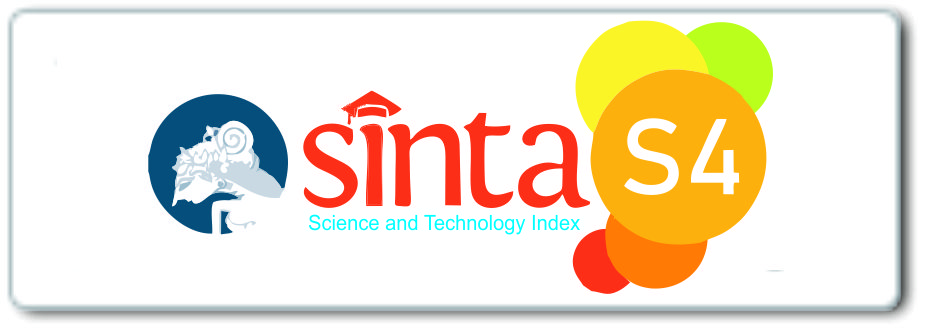Implementation of YOLO Algorithm in Adolescent Suicide Ideation Monitoring System Based on Real-Time Data Analysis
DOI:
https://doi.org/10.56988/chiprof.v4i1.87Keywords:
Adolescent, Algorithm YOLO, Artificial intelligence , Monitoring, Suicidal IdeationAbstract
This study aims to develop and implement a suicide ideation monitoring system in adolescents based on the YOLO (You Only Look Once) algorithm with real-time data analysis. The YOLO algorithm is used to detect facial expressions that reflect negative emotions, such as sadness and anxiety, which can be early indicators of suicidal ideation. The research methods used are qualitative and quantitative approaches, including the collection of facial image data, model training using the TensorFlow and OpenCV frameworks, and testing the system's performance in detecting facial expressions in real time. The system test is carried out by comparing the results of YOLO detection against reference data to measure the accuracy and speed of detection. The results of the study show that the developed system is able to detect facial expressions with an accuracy rate of 92% and an average detection speed of 30 milliseconds per frame. In addition, the system can be integrated with communication platforms to provide warning notifications to related parties as a form of early intervention. Thus, this study proves that the YOLO algorithm is effective in developing a suicide ideation monitoring system based on real-time data analysis so that it can be a preventive solution in supporting adolescent mental health.
Downloads
References
World Health Organization (WHO), “Suicide.” pp. 1–4, 2023. [Online]. Available: https://www.who.int/news-room/fact-sheets/detail/suicide
S. Naveed et al., “Trends in Bullying and Emotional and Behavioral Difficulties Among Pakistani Schoolchildren: A Cross-Sectional Survey of Seven Cities,” Front. Psychiatry, vol. 10, no. January, pp. 1–10, 2020, doi: 10.3389/fpsyt.2019.00976.
C. L. Odgers and M. R. Jensen, “Annual Research Review: Adolescent mental health in the digital age: facts, fears, and future directions,” J. Child Psychol. Psychiatry Allied Discip., vol. 61, no. 3, pp. 336–348, 2020, doi: 10.1111/JCPP.13190.
C. Esposito, G. Affuso, A. L. Amodeo, M. Dragone, and D. Bacchini, “Bullying Victimization: Investigating the Unique Contribution of Homophobic Bias on Adolescent Non-suicidal Self-injury and the Buffering Role of School Support,” School Ment. Health, vol. 13, no. 2, pp. 420–435, 2021, doi: 10.1007/s12310-021-09434-w.
H. Sabillillah, T. Sutabri, T. Informatika, and U. B. Darma, "Analysis of the Influence of Exposure to Negative Content on Social Media on Gen Z Mental Health," 2025.
S. U. Khan, V. K. Møller, R. J. N. Frandsen, and M. Mansourvar, "Real-time AI-driven quality control for laboratory automation: a novel computer vision solution for the opinions OT-2 liquid handling robot," Appl. Intell., Vol. 55, No. 6, 2025, doi:10.1007/S10489-025-06334-3.
D. Sisco, D. Sangaji, and T. Sutabri, "Management and Monitoring of Real-Time Access Internet Users Sehat Kota Prabumulih," vol. 7, no. 2, 2024, doi: 10.32877/bt.v7i2.1854.
T. H. H. Aldhyani, S. N. Alsubari, A. S. Alshebami, H. Alkahtani, and Z. A. T. Ahmed, “Detecting and Analyzing Suicidal Ideation on Social Media Using Deep Learning and Machine Learning Models,” Int. J. Environ. Res. Public Health, vol. 19, no. 19, 2022, doi: 10.3390/ijerph191912635.
S. Ji, S. Pan, X. Li, E. Cambria, G. Long, and Z. Huang, “Suicidal Ideation Detection: A Review of Machine Learning Methods and Applications,” IEEE Trans. Comput. Soc. Syst., vol. 8, no. 1, pp. 214–226, 2021, doi: 10.1109/TCSS.2020.3021467.
Yunike, M. V. I. W. Winta, and M. M. S. P. Pratiwi, “Science Midwifery Psychological distress and family support mediate suicidal ideation in adolescents diagnosed with cancer: A literature review,” Sci. Midwifery, vol. 12, no. 2, pp. 2721–9453, 2024, [Online]. Available: www.midwifery.iocspublisher.orgjournalhomepage:www.midwifery.iocspublisher.org
R. Adrian, “Implementation of YOLO ( You Only Look Once ) Algorithm for Drowsiness Detection as An Additional Safety Feature in the Operation of Crane Equipment in Real Time,” vol. 10, no. 1, pp. 113–120, 2025, doi: 10.31572/inotera. Vol10.Iss1.2025.ID458.
Y. S. H. Langgeng, E. I. Setiawan, S. Imron, and J. Santoso, “Long Short-Term Memory-Based Chatbot for Vocational Registration Information Services,” J. Appl. Data Sci., vol. 4, no. 4, pp. 414–430, 2023, doi:10.47738/jads.v4i4.128.
"ARTIFICIAL INTELLIGENCE IN HEALTHCARE: INNOVATION AND APPLICATION".
T. Sutabri and C. A. Putra, “White Blood Cell Classification Using SMOTE-SVM Method with Hybrid Feature Extraction and Image Segmentation Using Gaussian Mixture Model,” ECTI Trans. Comput. Inf. Technol., vol. 19, no. 1, pp. 75–87, 2025, doi: 10.37936/ecti-cit.2025191.257148.
B. Rawat, A. S. Bist, Mulyati, M. Fakhrezzy, and R. D. Octavyra, "AI-Based Assistance To Reduce Suicidal Tendency Among Youngsters," APTISI Trans. Great., vol. 7, no. 2, pp. 105–112, 2022, doi: 10.33050/atm.v7i2.1829.
X. Kong, Y. Yao, C. Wang, Y. Wang, J. Teng, and X. Qi, “Automatic Identification of Depression Using Facial Images with Deep Convolutional Neural Network,” Med. Sci. Monit., vol. 28, pp. 1–12, 2022, doi: 10.12659/MSM.936409.
S. Sabour et al., “A chatbot for mental health support: exploring the impact of Emohaa on reducing mental distress in China,” Front. Digit. Heal., vol. 5, no. May, pp. 1–13, 2023, doi: 10.3389/fdgth.2023.1133987.
E. Maekawa et al., “Bayesian Networks for Prescreening in Depression: Algorithm Development and Validation,” JMIR went. Heal., vol. 11, pp. 1–18, 2024, doi: 10.2196/52045.
A. H. Saffar, T. K. Mann, and B. Ofoghi, “Textual emotion detection in health: Advances and applications,” J. Biomed. Inform., vol. 137, no. December 2022, p. 104258, 2023, doi: 10.1016/j.jbi.2022.104258.
S. T. Ibrahim, M. Li, J. Patel, and T. R. Katapally, “Utilizing natural language processing for precision prevention of mental health disorders among youth: A systematic review,” Comput. Biol. Med., vol. 188, no. September 2024, p. 109859, 2025, doi: 10.1016/j.compbiomed.2025.109859.
Y. Lin et al., “Automatic literature screening using the PAJO deep-learning model for clinical practice guidelines,” BMC Med. Inform. Decis. Mak., vol. 23, no. 1, pp. 1–12, 2023, doi:10.1186/s12911-023-02328-8.
R. Mishra, S. Singh, J. Kaur, P. Singh, and R. R. Shah, “Hindi Chatbot for Supporting Maternal and Child Health Related Queries in Rural India,” Proc. Annu. Meet. Assoc. Comput. Linguist., pp. 69–77, 2023, doi: 10.18653/v1/2023.clinicalnlp-1.9.
Mr. L. Nilsen et al., “Late and Long-Term Treatment-Related Effects and Survivorship for Head and Neck Cancer Patients,” Curr. Treat. Options Oncol., vol. 21, no. 12, 2020, doi:10.1007/s11864-020-00797-x.
J. D. Buckner, A. W. Lemke, E. R. Jeffries, and S. M. Shah, “Social anxiety and suicidal ideation: Test of the utility of the interpersonal-psychological theory of suicide,” J. Anxiety Disord., vol. 45, pp. 60–63, 2017, doi: 10.1016/j.janxdis.2016.11.010.
M. Sarosa and N. Muna, “Implementasi Algoritma You Only Look Once ( Yolo ) Untuk Implementation of You Only Look Once ( Yolo ) Algorithm for,” J. Techno. Inf. and Computing Science., vol. 8, no. 4, pp. 787–792, 2021, doi: 10.25126/jtiik.202184407.
B. X. Yang et al., “Characteristics of High Suicide Risk Messages From Users of a Social Network—Sina Weibo ‘Tree Hole,’” Front. Psychiatry, vol. 13, no. February 2022, doi: 10.3389/fpsyt.2022.789504.
B. Rahi, F. Rashid, R. Sultana, J. Benoit, F. Parvez, and K. Khan, “Impact of Nutritional Minerals Biomarkers on Cognitive Performance Among Bangladeshi Rural Adolescents—A Pilot Study,” Nutr. , vol. 16, no. 22, pp. 1–14, 2024, doi: 10.3390/nu16223865.
A. E. E. Rashed, A. E. M. Atwa, A. Ahmed, M. Badawy, M. A. Elhosseini, and W. M. Bahgat, Facial image analysis for automated suicide risk detection with deep neural networks, vol. 57, no. 10. Springer Netherlands, 2024. doi: 10.1007/s10462-024-10882-4.
C. Dewi, L. S. Gunawan, S. G. Hastoko, and H. J. Christanto, “Real-Time Facial Expression Recognition: Advances, Challenges, and Future Directions,” Vietnam J. Comput. Sci., vol. 11, no. 2, pp. 167–193, 2024, doi: 10.1142/S219688882330003X.
C. Yang and T. Algoritma, "Design of Aircraft Shooter Controlled Rocket Equipped with Intelligent Algorithm Integrated Chip," no. December, 2014.
E. Yeskuatov and S. Chua, “Leveraging Reddit for Suicidal Ideation Detection : A Review of Machine Learning and Natural Language Processing Techniques,” 2022.
G. Plastiras, C. Kyrkou, and T. Theocharides, "Efficient content-based object detection for unmanned aerial vehicles by selective tile processing," ACM Int. Conf. Proceeding Ser., 2018, doi: 10.1145/3243394.3243692.
H. Ghanadian, I. Nejadgholi, and H. A. L. Osman, “Socially Aware Synthetic Data Generation for Suicidal Ideation Detection Using Large Language Models,” vol. 12, no. December 2023, 2024.
Y. Q. Ouyang et al., “Effectiveness of a breastfeeding promotion intervention model based on Society ecosystems Theory for maternal women: a study protocol of randomized controlled trial,” Reproductive Health, vol. 20, no. 1. 2023. doi:10.1186/s12978-023-01719-4.
D. M. Holman et al., "Linking anhedonia symptoms with behavioral and neural reward responses in adolescent depression," Eur. Child Adolesc. Psychiatry, vol. 22, no. 1, pp. 1–3, 2018, doi: 10.1007/s00787-023-02243-3.
J. Lu et al., "The impacts of parent-child communication on left-behind children's mental health and suicidal ideation: A cross-sectional study in Anhui," Child. Youth Serv. Rev., vol. 110, no. September 2019, 2020, doi: 10.1016/j.childyouth.2020.104785.
C. S. Widom and X. Li, “The role of psychiatric symptoms and environmental vulnerability factors in explaining the relationship between child maltreatment and suicidality: A prospective investigation,” J. Affect. Disord., vol. 276, pp. 720–731, 2020, doi: 10.1016/j.jad.2020.06.039.
A. A. M. Atya and K. H. Bilal, “Review on Emotion Recognition Using Facial Expressions,” Eur. J. Electr. Eng. Comput. Sci., vol. 5, no. 3, pp. 1–4, 2021, doi: 10.24018/ejece.2021.5.3.322.
J. Wang, Y. Zhai, L. Zhu, L. Xu, and H. Yuan, "PD-YOLO: A study of daily behavioral detection in housed sheep," PLoS One, vol. 19, no. 11 November, pp. 1–22, 2024, doi: 10.1371/journal.pone.0313412.
D. Turcian and V. Stoicu-Tivadar, “Real-Time Detection of Emotions Based on Facial Expression for Mental Health,” Stud. Health Technol. Inform., vol. 309, pp. 272–276, 2023, doi: 10.3233/SHTI230795.
N. Wang et al., “Learning Models for Suicide Prediction from Social Media Posts,” Comput. Linguist. Clin. Psychol. Improv. Access, CLPsych 2021 - Proc. 7th Work. Conjunction with NAACL 2021, pp. 87–92, 2021, doi: 10.18653/v1/2021.clpsych-1.9.
J. Chen et al., “Multimodal digital assessment of depression with actigraphy and app in Hong Kong Chinese,” Transl. Psychiatry, Vol. 14, No. 1, 2024, doi:10.1038/S41398-024-02873-4.
G. Huang, Z. Liu, L. Van Der Maaten, and K. Q. Weinberger, “Densely connected convolutional networks,” Proc. - 30th IEEE Conf. Comput. Vis. Pattern Recognition, CVPR 2017, vol. 2017-January, pp. 2261–2269, 2017, doi: 10.1109/CVPR.2017.243.
Y. Li, D. Weng, Z. Tian, J. Hou, and Z. Li, “YOLO-Ti : an efficient object detection approach for tiny facial markers,” vol. 13395, no. Oece, pp. 1–11, 2024, doi: 10.1117/12.3048940.
I. Kusumawaty, “Trust in digitalization and artificial intelligence : Insights from qualitative research on online parenting programs,” vol. 12, no. 5, 2024.
Downloads
Published
How to Cite
Issue
Section
License
Copyright (c) 2025 Yunike, Tata Sutabri

This work is licensed under a Creative Commons Attribution-NonCommercial 4.0 International License.




















